Yesterday, we talked about why a provider needs to take a good look at “How to set your childcare rates”. In that post, I talked about how and why it is important for a childcare provider to know exactly what their rates are.
Today, I would like to look at how to successfully convey your rates to clients and how to develop a strategy to know how and when to raise your rates. Oh and don’t miss the FREE DOWNLOAD!
How to set your childcare rates & when to raise them, Part 2
As a child, I remember my mom saying that “we don’t talk about religion, politics, or money.” She said, “there are certain things you do not discuss in public.” Looking back, I am almost sure she meant those things were not to be discussed in social gatherings.
Mom was right. Most people do feel somewhat uncomfortable discussing money, especially when asking for payment.
It should be noted that often parents will have no idea that childcare providers have recurring costs.
Well, we do, and a lot of them.
We have annual fees such as our license, insurance, etc. as well as monthly fees such as utilities. There are also weekly fees such as payroll, groceries, supplies, etc. And for the most part, the income received from the tuition is what pays for those expenses and more.
How to tell them
Years ago I found a childcare provider’s site where a very wise provider broke down the cost of her childcare to inform clients what her rates were and why they were. I have found it’s very important for not only providers to be aware of their costs and expenses but also for them to inform clients what we have to deal with.
I will admit this is a complete about-face from where I was when I started my own childcare. Back then I felt that as a business owner it was just part and parcel of what my responsibilities were. It was my job and my business so I didn’t think it was appropriate to divulge my many responsibilities including the financial obligations.
How about a Handout?
Handouts work great! Years ago I created a separate handout that I give to parents during a tour called “You charge how much?”, just to further explain some of the financial obligations a childcare provider has.
Currently, I prepare a Tuition Rate Sheet annually. What this does is that it forces me to look at the current rate that I charge and to take the time to compare it to the local rate. I do this whether or not I intend to increase my rates.
I also prepare a Tuition Rate Worksheet handout (see below) that I make copies of to give to each prospective family.
The purpose of this document is to also make the clients aware of what they’re actually paying for childcare. In the worksheet, you will see that it is broken down both monthly and weekly.
Why?
I do this to show the actual rate of pay. The reason is most people will look at the lump sum that they pay either weekly or monthly and not stop to consider what that actually breaks down to hourly.
[raw_html_snippet id="tuition worksheet content upgrade"] |
As I said, I know this issue can be uncomfortable for both the provider as well as prospective clients. I have found that it is much easier (and more professional) to hand a client a worksheet or rate sheet than to simply telling them a figure.
When should you raise your rates?
Visit your rates annually
Knowing when to increase your rates is just as important as knowing how to set your childcare rates. Most providers again feel uncomfortable raising rates on existing clients. Which is why we usually will raise our rates for new incoming clients. That’s another reason why you should start off considering your expenses so that you charge a sufficient amount from the beginning.
In general, it is a good practice to visit your rates annually and see if an adjustment should be made.
Is it Time for an Increase?
You may find that you might not want to increase your rates, but rather to adjust your tuition structure.
What do I mean?
I currently have different rates for Infants, Toddlers & School-age children. I also have separate rates for full-time, part-time, or drop-in (daily) clients.
If you decide to make an increase, consider doing it incrementally like on an annual basis. It is important to note that even a small increase can significantly affect your bottom line.
Tom Copeland, The Nation’s Leading Expert on the Business of Family Child Care, in his post “How to Raise Your Rates”, says if providers “make it a practice to raise your rates annually will add up over the years and make a big difference in your income. If you are charging $140 a week and increase your rates by 3%, that will add up to $4.20 more per week per child. If you work 52 weeks a year, the difference that year will add up to $218.40 ($4.20 x 52 weeks) per child. If there are five children in your program, you will earn $1,092 more that year.
If you do decide that a rate increase is in order, give your clients plenty of notice.
Another strategy Tom suggests is, “Adding an annual rate increase to your contract“ so that parents can be referred back to the contract when the time comes.
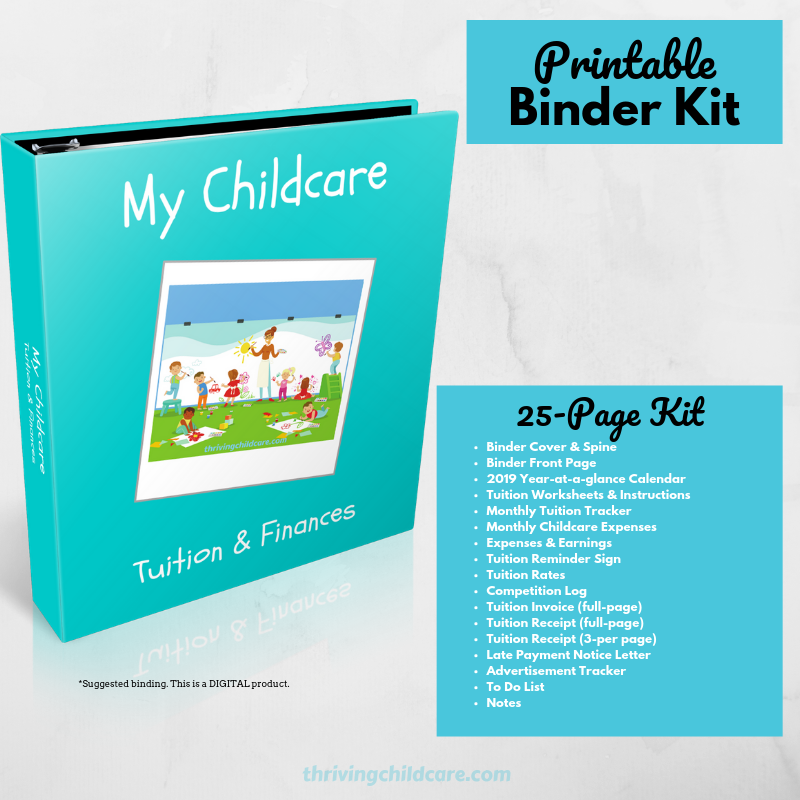
General Business Principle
When thinking about how to set your childcare rates consider this, if you went to a store today and the price of an item was displayed as $9.99, you would understand that is what you would need to pay for that item. Now that price may just increase over time. Most people would not even consider haggling prices at a store.
Similarly, having your rates written down in a flyer, worksheet, brochure, etc. shows the value of your services. It also conveys credibility and professionalism about your business that will establish the relationship you have with your clients from the start.
While talking about money can be uncomfortable, trust me, you don’t want to be in the business of YOU paying for someone’s child to be cared for at your childcare. Sorry, mom!

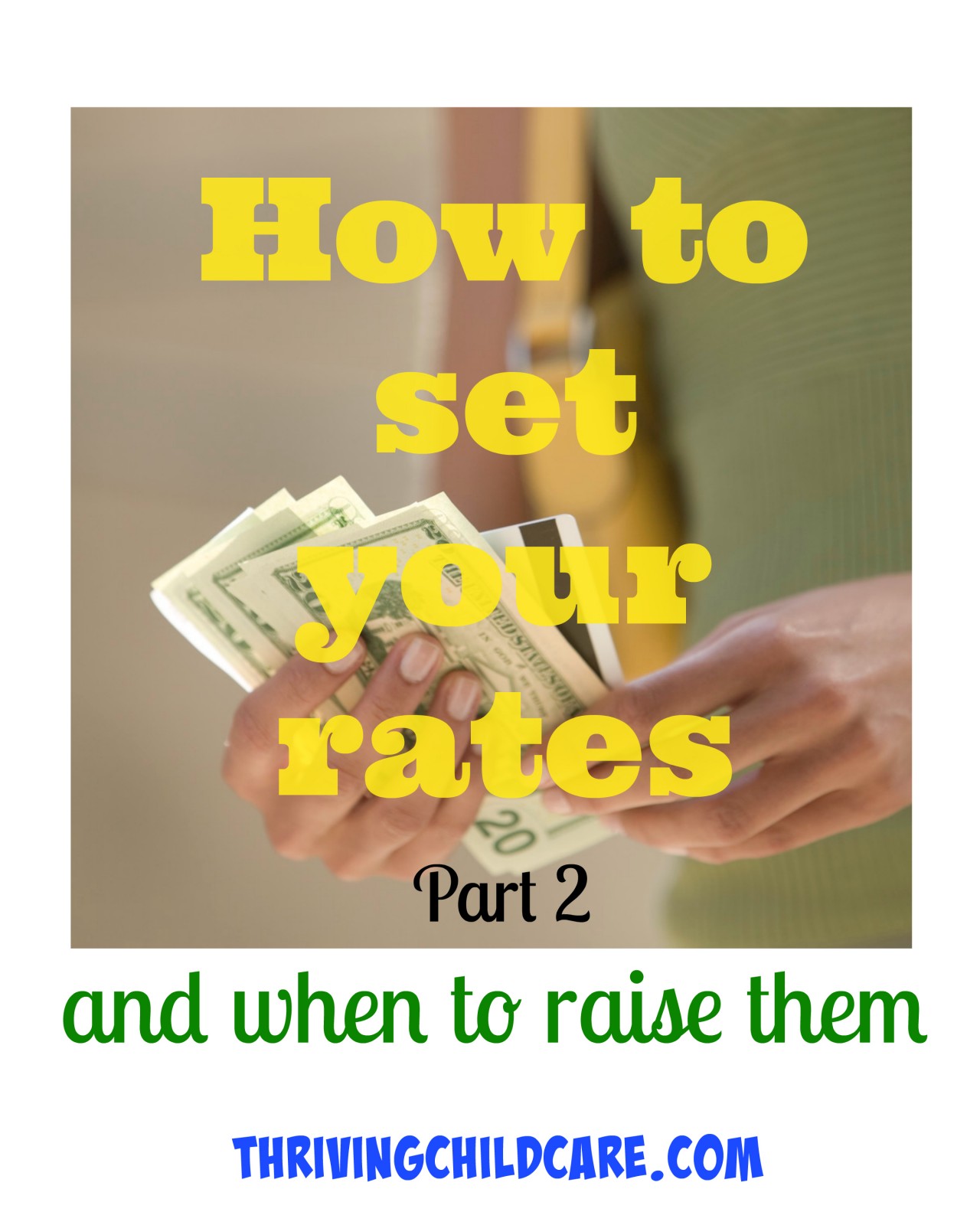

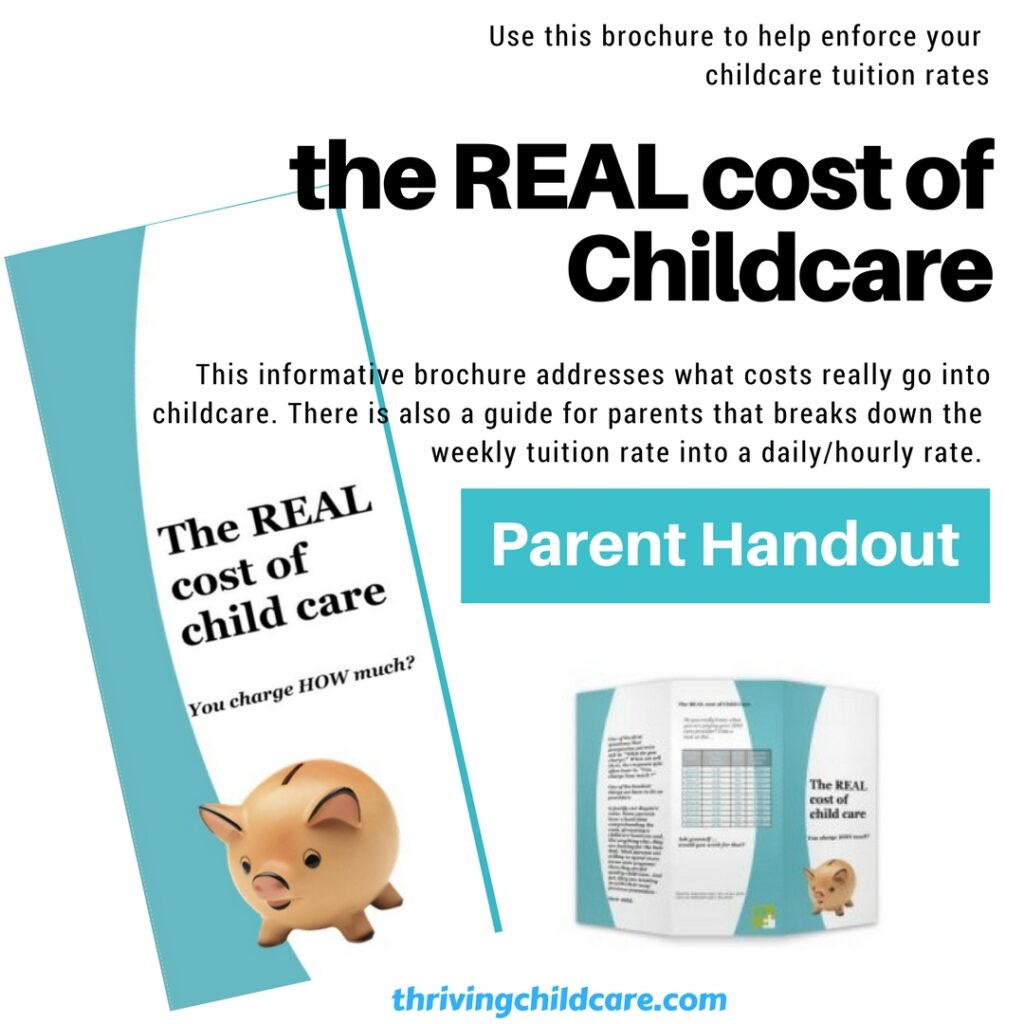
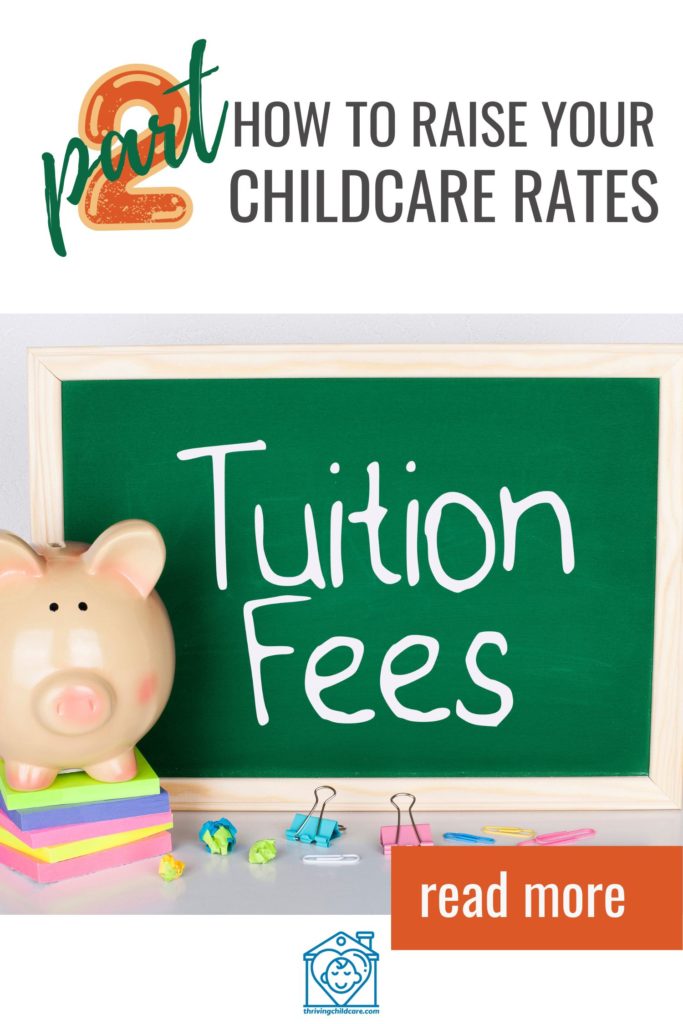

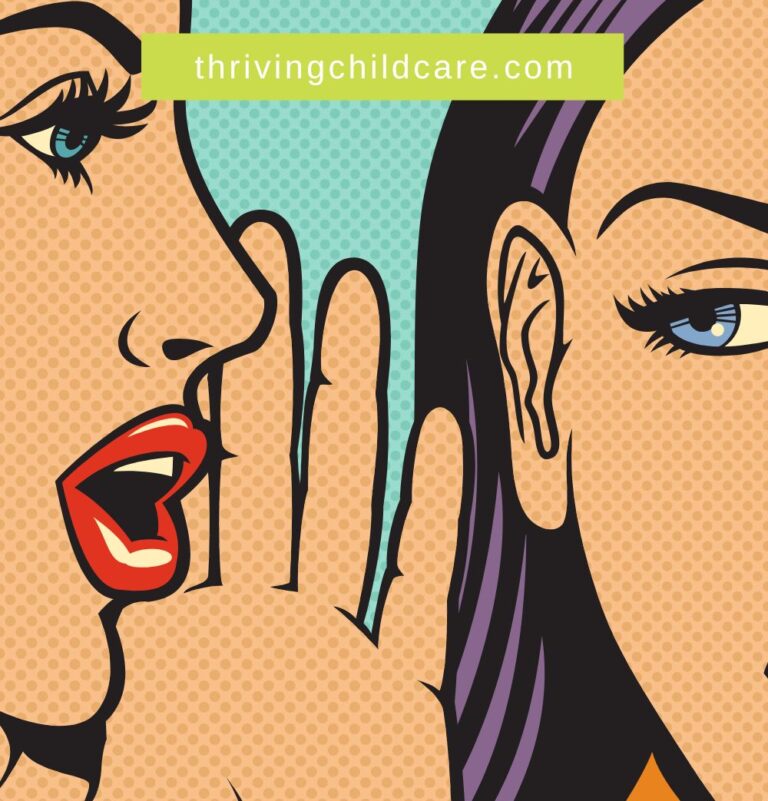

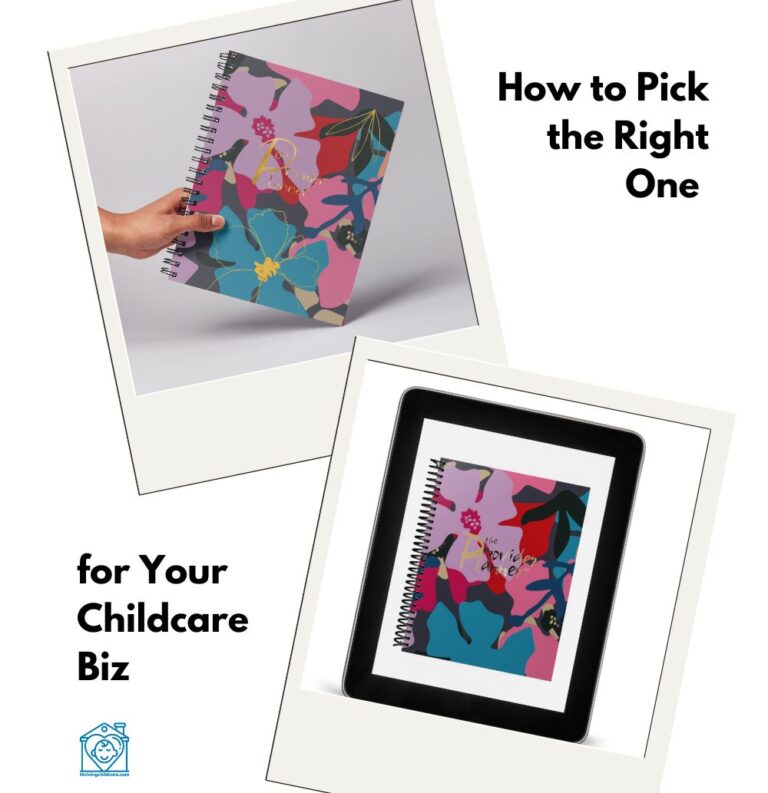



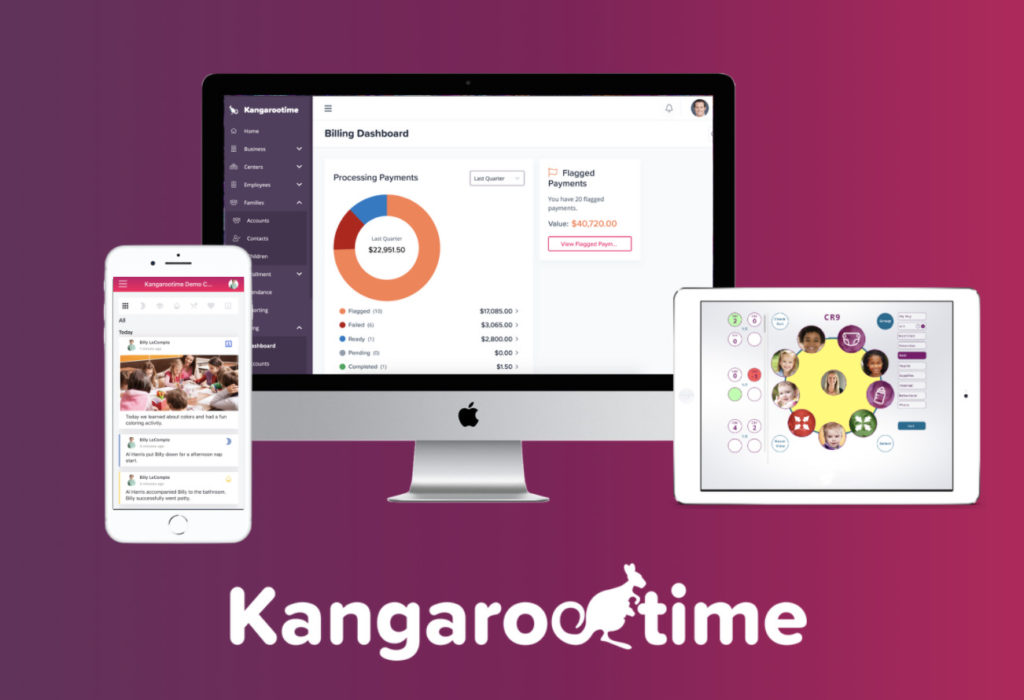

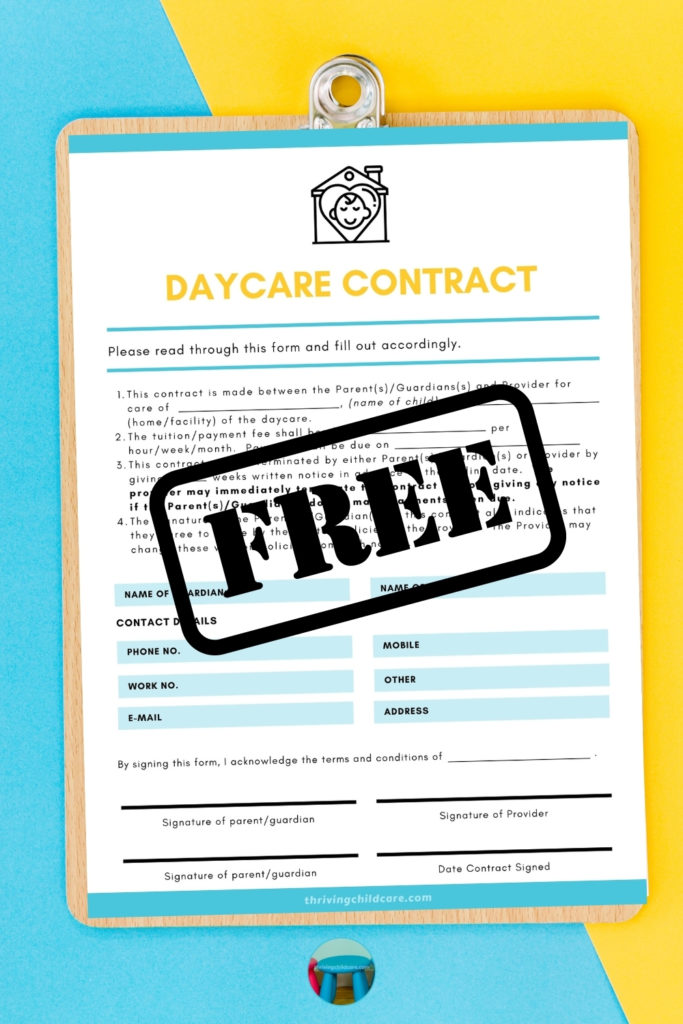
One Response
It’s interesting to know how advertisements can factor in on the expenses of running a child care facility. I’d like to have my son be enrolled in one soon to give him a head start for his education. I think child care services will be a good stepping stone to preparing him for preschool and elementary.